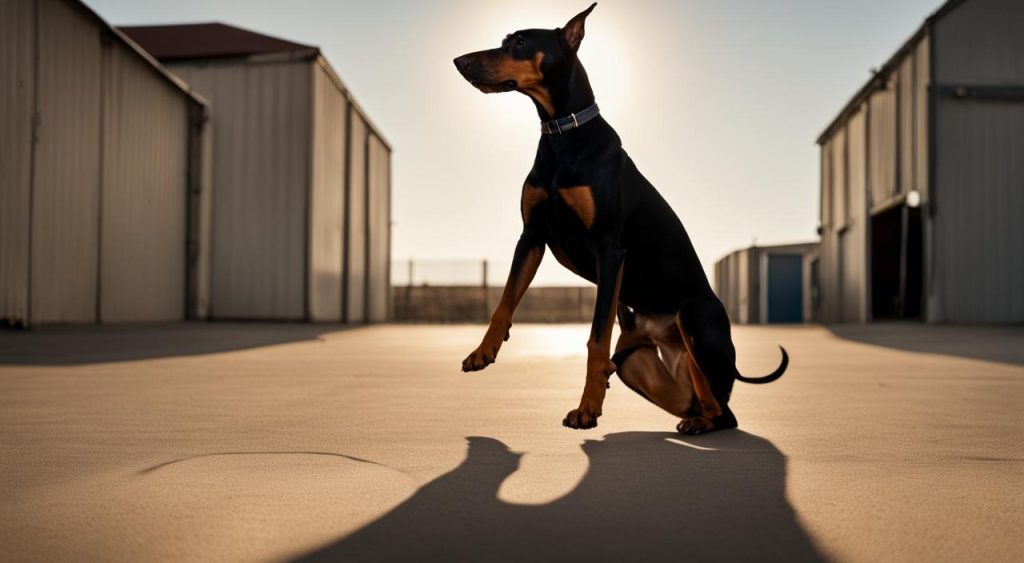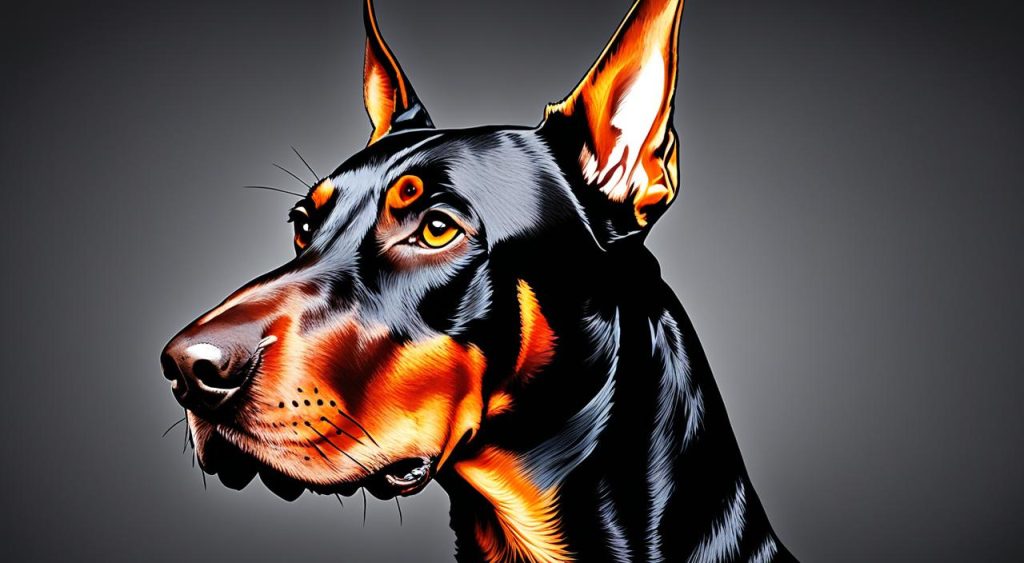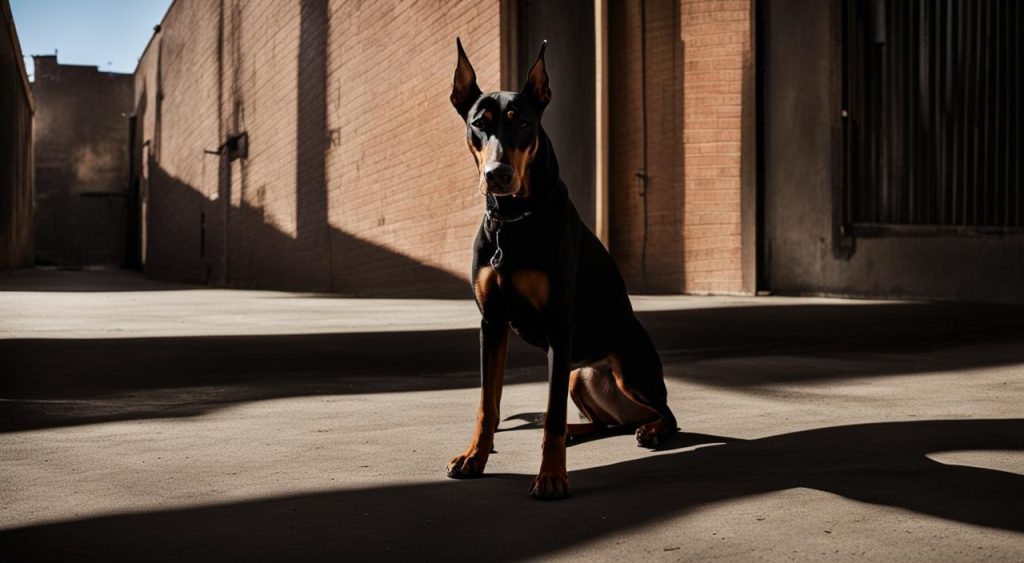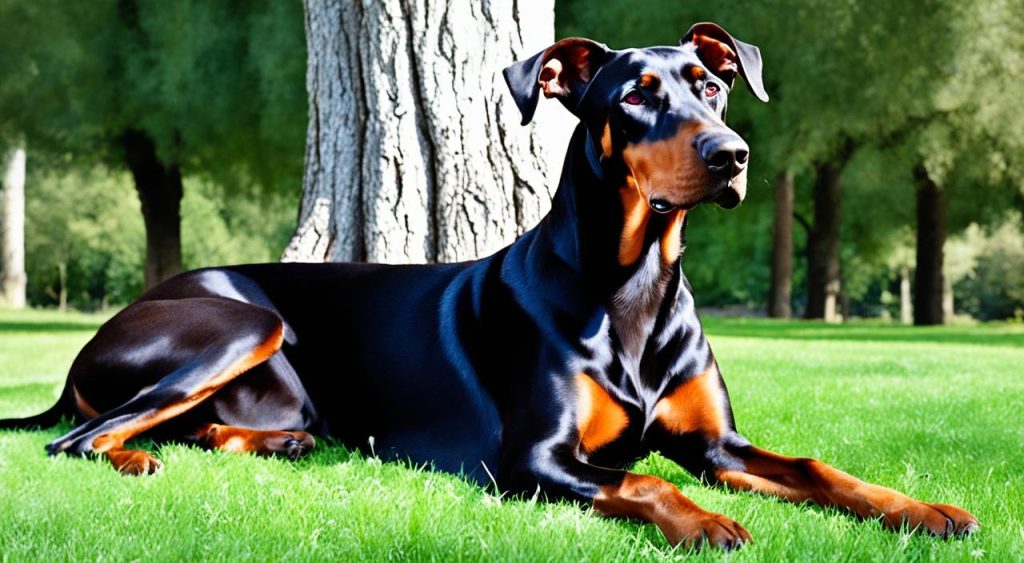When it comes to the title of the strongest dog, Dobermans often come to mind. Their powerful presence and reputation for loyalty and protectiveness make them stand out among other breeds. But are Dobermans truly the strongest dogs? Let’s delve into the facts and find out.
Key Takeaways:
- Dobermans have a bite force of up to 229 PSI, which is higher than the average for most dog breeds.
- A dog’s bite force alone does not determine their overall aggression or danger level.
- Factors like training, socialization, and individual temperament also play a role.
- Dobermans are known for their intelligence, loyalty, and protectiveness.
- Doberman owners should understand the legal implications of their dog’s bite force.
The Anatomy and Measurement of Doberman Bite Force
The Doberman’s bite is a powerful force, determined by the combination of their teeth, jaw muscles, and skull structure. With sharp and pointed teeth, Dobermans possess a scissor-like bite that allows them to tear through flesh and bone effortlessly. The design of their skull provides them with the necessary leverage to deliver a forceful bite.
Bite force is measured in pounds per square inch (PSI) and serves as a quantitative representation of a dog’s biting strength. For Dobermans, the average bite force is approximately 229 PSI. However, it’s important to note that this measurement can vary depending on various factors such as the dog’s size, age, and overall health. Additionally, a Doberman’s temperament and training can also impact their bite force.
Implications of Doberman Bite Force
The bite force of a Doberman has significant implications for training and legal consequences. Proper training and handling techniques can effectively harness a Doberman’s formidable bite force for protection and defense. However, training a Doberman to utilize its bite force requires specialized knowledge and experience to ensure safety and control.
Training a Doberman to effectively use its bite force involves teaching the dog appropriate commands and boundaries to discern when biting is necessary and when it is not. This includes distinguishing between potential threats and normal situations, as well as understanding the appropriate level of force to exert.
Improper training can result in an unpredictable and dangerous dog, posing a risk to both humans and other animals. It is crucial for Doberman owners to seek professional guidance and training to prevent any potential incidents or harm.
Furthermore, it is essential for Doberman owners to be aware of the legal implications associated with their dog’s bite force. Owners are held liable for any damage or injury caused by their dogs, regardless of whether or not the dog displays aggressive behavior. Therefore, understanding and adhering to local laws and regulations regarding responsible pet ownership and liability are of utmost importance.
By recognizing and responsibly addressing the implications of a Doberman’s bite force, owners can ensure the safety of both their dog and those around them while harnessing the breed’s natural protective instincts.
Comparing Doberman Bite Force to Other Breeds
When it comes to bite force, Dobermans are often considered one of the strongest dog breeds. With a bite force of around 229 pounds per square inch (PSI), they possess a powerful jaw capable of delivering a firm grip. However, it’s worth noting that some other breeds exhibit slightly stronger bite forces.
For example, Rottweilers are known for their impressive bite force, which averages around 328 PSI. German Shepherds, another formidable breed, have an average bite force of approximately 238 PSI. Meanwhile, Pitbulls, often associated with strong jaws, exert a bite force of about 235 PSI.
Nevertheless, it’s important to emphasize that a dog’s bite force alone does not determine its potential for aggression or danger. Other factors, such as temperament, training, and individual behavior, play crucial roles in assessing a dog’s overall behavior. Therefore, a breed’s bite force should be considered in conjunction with these other factors when evaluating its characteristics.





